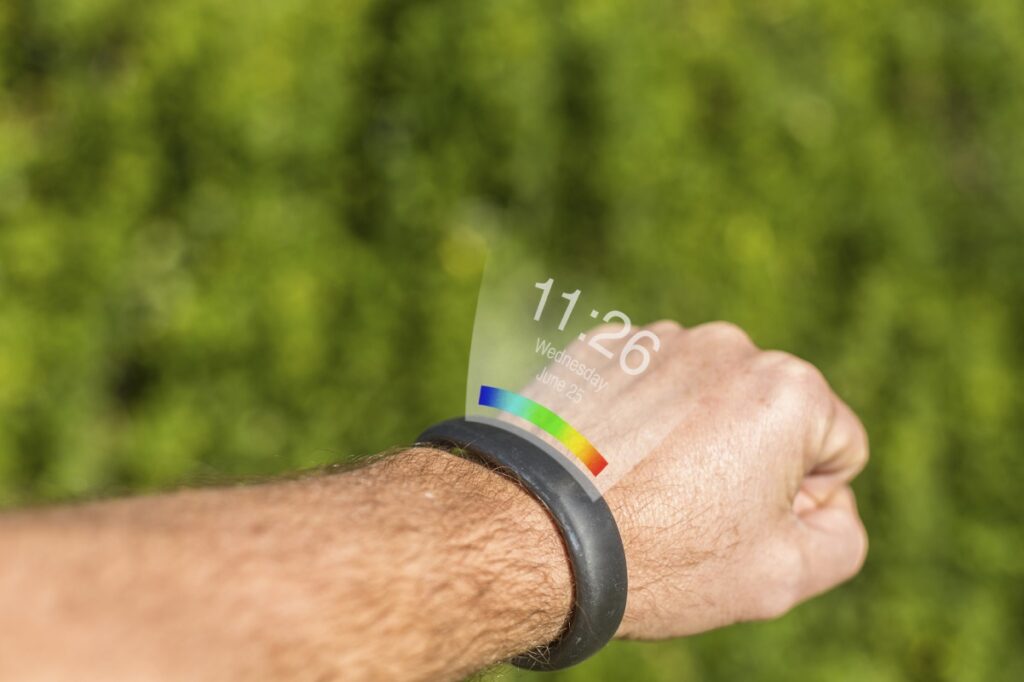For most HR professionals, the development and retention of employees has remained largely unchanged over the past few decades. New schools of thought come along bringing with them snappily titled procedures such as ‘personal development plans’, ‘360 reviews’ or ‘psychometric profiling’. However, the fundamental process remains the same – HR professionals ask questions about the performance or attitude of staff and they compile and analyse the answers.
The picture that emerges is no more than a best guess of how an employee is performing and is simply a snapshot in time. After all, these assessments are usually largely based on subjective opinion and not raw, unbiased data.
Wearable devices will see rapid uptake over the next few years, driven by low prices and a glut of choice for consumers. The information these devices can gather is potentially invaluable on both a personal and professional level for employees.
The advent of data science, combined with wearable technology will radically change this picture.
A typical wearable fitness device can track an employee’s level of activity and heartrate. This information can be analysed and combined with other data to paint a more rounded view of their wellbeing and stress levels. It should be underlined at this point that I am not advocating an Orwellian nightmare scenario where employers force their employees to completely surrender their privacy. Any move towards wearable tracking needs to have the full consent and, critically, the buy-in of employees.
Mining wearable data for HR purposes needs to benefit the people within a business as much as it benefits the business itself. Involving a third party can aid this process by providing a buffer between the sensitive and personal data of employees and their employer.
So how would knowing more about the movement, activity and health of your employees actually improve their performance and morale?
At the most basic level, wearable data can reveal the stress level of employees by showing when their heart rate has risen despite their movement being low. Combining this information with details on what work-related activity they were undertaking, and HR can uncover practices or relationships that are detrimental to the welfare of employees.
For example, if every week during and after a particular meeting the employees that attend it register elevated heart rates, it could point to a factor within that meeting that is stressful and damaging. Combining this information with wellbeing surveys will clarify exactly what emotions staff were feeling and provide additional context – was it excitement, anger or frustration that caused the elevation in heart rates? On a more individual level, HR can identify employees that are consistently stressed or suffering from poor sleep, despite having an outwardly calm demeanour, and provide them with the support they need.
By combining a wearable such as a Fitbit with technology that records movement around the office, such as beacon technology, an employer can have a better picture of how their staff interact with one another and resources. Employees who are tethered to their desks can be quickly identified, teams that mix together, or don’t mix at all will become apparent.
Practically, this can provide a useful insight into practices that could be reducing productivity or indicate that particular functions, such as sales or innovation, are not covering the required miles. For example, if two teams that should be working closely together show little mixing on a day to day basis, it could be an indication of poor relationships or an over-reliance on email or chatting apps. It could help performance if these teams were encouraged to engage with each other more face-to-face.
Similarly, if an employee shows little movement away from his or her desk, it could be a red flag that they are overworked. However, if this information doesn’t stack up with data on email volume or the number of projects they are working on, it may be an indication of a much deeper problem such as poor relationships with colleagues or productivity issues.
For HR professionals, data science is quickly becoming one of the most powerful tools they have available.
The examples I’ve given are just a small snapshot of what is possible by collecting and analysing wearable data.
In the next few years, even more profound application of this type of information could revolutionise every aspect of how a business runs. For HR professionals, data science is quickly becoming one of the most powerful tools they have available.
In the same way that social techniques revitalised hiring practices, wearable data combined with enterprise technology will completely reframe what is possible when developing and retaining employees.
However, while it is essential that progressive HR professionals begin to explore new approaches, it is critical that they have a clear message on data ownership and privacy.






